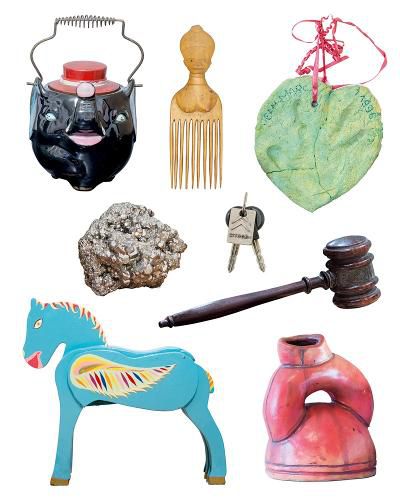Readings Newsletter
Become a Readings Member to make your shopping experience even easier.
Sign in or sign up for free!
You’re not far away from qualifying for FREE standard shipping within Australia
You’ve qualified for FREE standard shipping within Australia
The cart is loading…






An artist’s anthropology of everyday talismanic objects
Whether a keepsake, memento or heirloom, everyone has their own talismans: objects with a value that is only of significance to their owner. The meaning of such objects gets assigned silently, internally, often without any words being articulated, and yet when we explain their importance, it reveals much about who we are. Queens-based artist, curator and educator Elisabeth Smolarz (born 1976) approaches these objects as elements in a social and anthropological process. She visited 200 people in North America, Europe, the Middle East and Asia, and spent an afternoon with them talking about the objects they had selected. In dialogue with these collaborators, she then developed an installation of the individual objects–an arrangement that ultimately produces a portrait of the person. The photographic still lifes are accompanied by short texts by a range of writers who share their responses to these portraits.
$9.00 standard shipping within Australia
FREE standard shipping within Australia for orders over $100.00
Express & International shipping calculated at checkout
An artist’s anthropology of everyday talismanic objects
Whether a keepsake, memento or heirloom, everyone has their own talismans: objects with a value that is only of significance to their owner. The meaning of such objects gets assigned silently, internally, often without any words being articulated, and yet when we explain their importance, it reveals much about who we are. Queens-based artist, curator and educator Elisabeth Smolarz (born 1976) approaches these objects as elements in a social and anthropological process. She visited 200 people in North America, Europe, the Middle East and Asia, and spent an afternoon with them talking about the objects they had selected. In dialogue with these collaborators, she then developed an installation of the individual objects–an arrangement that ultimately produces a portrait of the person. The photographic still lifes are accompanied by short texts by a range of writers who share their responses to these portraits.